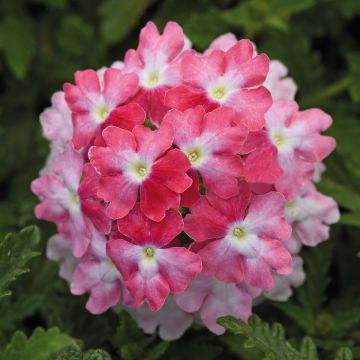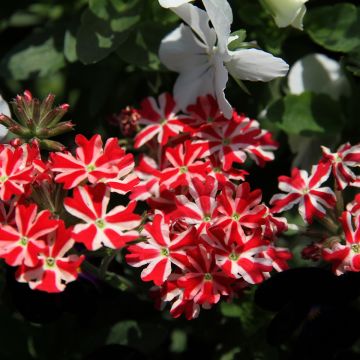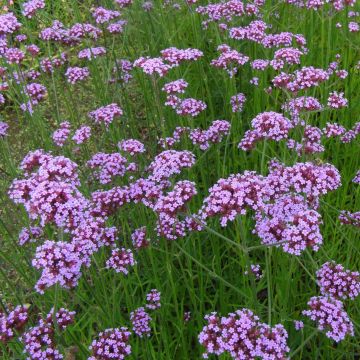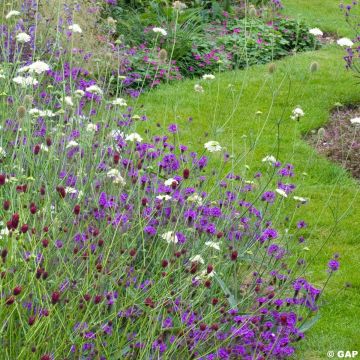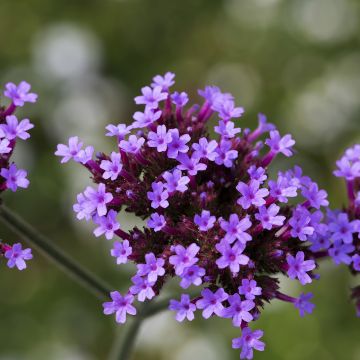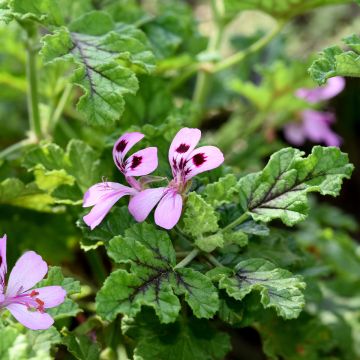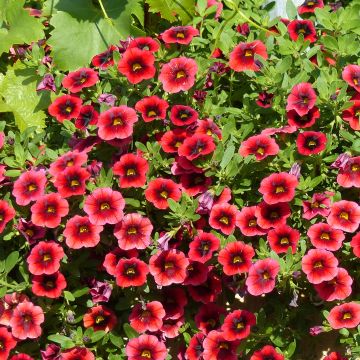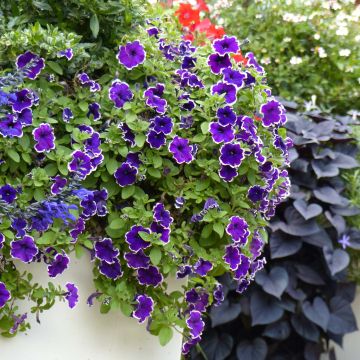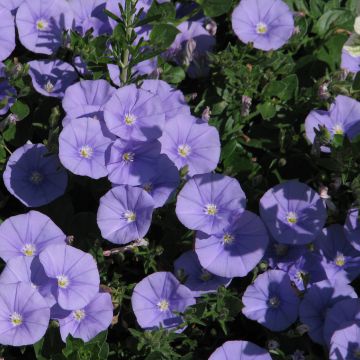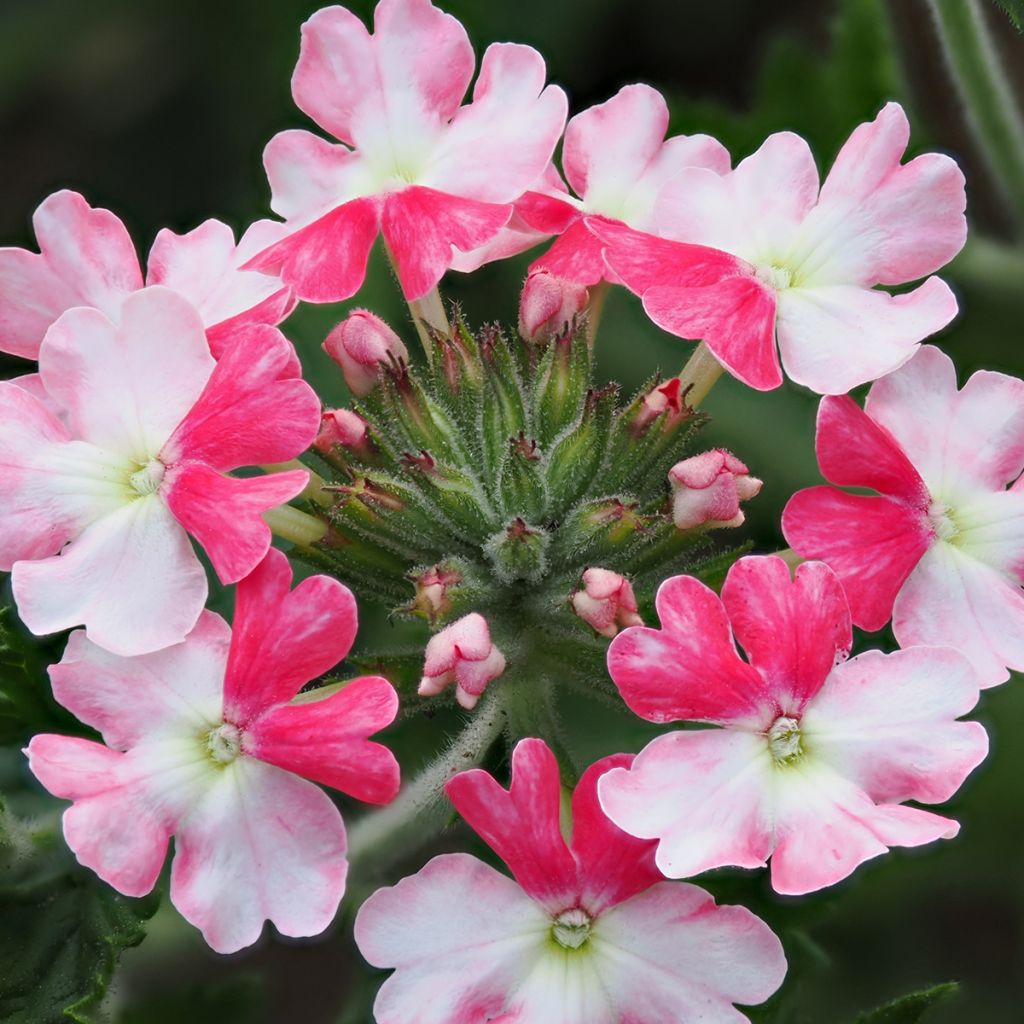

Verbena hybrida Pink Parfait
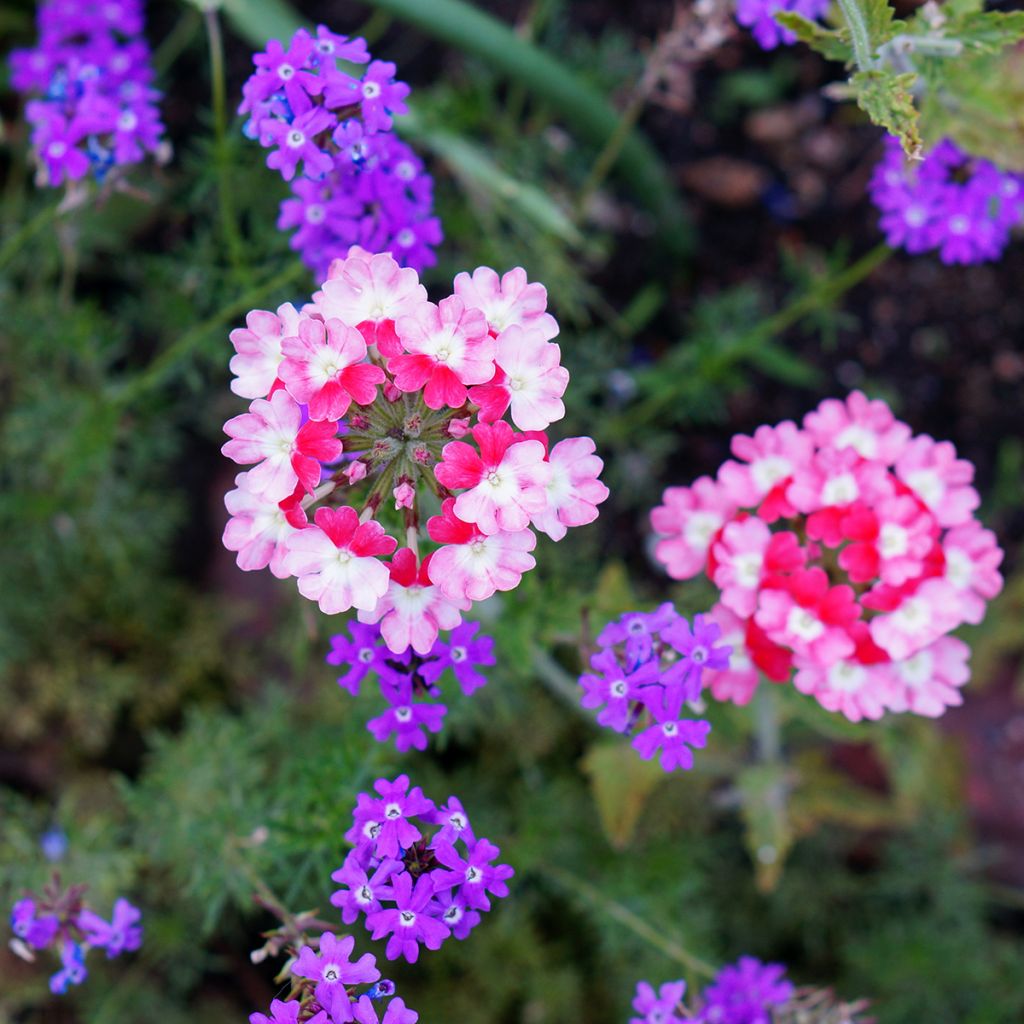

Verbena hybrida Pink Parfait
Verbena hybrida Pink Parfait
Verbena hybrida Pink Parfait
Garden Verbena, Annual Vervain, Bedding Verbena
Why not try an alternative variety in stock?
View all →This plant carries a 6 months recovery warranty
More information
We guarantee the quality of our plants for a full growing cycle, and will replace at our expense any plant that fails to recover under normal climatic and planting conditions.
From €5.90 for pickup delivery and €6.90 for home delivery
Express home delivery from €8.90.
Does this plant fit my garden?
Set up your Plantfit profile →
Description
The Verbena hybrida 'Pink Parfait' is a hybrid verbena that stands out with its large, particularly attractive, bicolored umbels of flowers in an unprecedented color, and very fragrant. It is a plant that blooms continuously from late spring until early autumn if pruned regularly. Its bicolored umbels in shades of red and pink beautifully decorate containers and summer beds. This vigorous selection is resistant to powdery mildew and can tolerate partial shade.
The 'Pink Parfait' Verbena belongs to the Verbenaceae family and is a horticultural hybrid (Floranova breeding) whose ancestors inhabited the warm regions of South America. This plant has a slightly anarchic habit: its stems first form an upright tuft, then the vegetation spreads in a disorderly manner. Regular pruning allows it to have a more harmonious ball-shaped habit while stimulating the appearance of flowers at the tips of new stems. The plant reaches about 30 cm in height and spreads 50 to 60 cm. It flowers from late May or early June until the first frost. Its stems elongate at the same time as the umbels form. The flowers are fragrant and nectariferous. This perennial plant can withstand light frosts, and even a little more if the soil it grows in is dry. For this reason, it is often grown as an annual in our climates, thanks to its rapid growth.
The garden verbenas are really easy plants to grow, suffering more from excess water and fertilizer than from temporary neglect. They overflow from hanging baskets, slip between other upright plants in flower pots or containers, hiding their base without suffering from their presence. They are also very beautiful in rockeries, allowing for quick filling of spaces left empty by damage caused by a harsh winter. Create a beautiful container by planting the 'Pink Parfait' verbena with a 'Apple Blossom Rosebud' pelargonium, a 'Sweet Heart Jet Black' morning glory, and a 'Hot Water Blue' trailing lobelia.
Report an error about the product description
Flowering
Foliage
Plant habit
Botanical data
Verbena
hybrida
Pink Parfait
Verbenaceae
Garden Verbena, Annual Vervain, Bedding Verbena
Cultivar or hybrid
Other Annual Verbena
Planting and care
Plant your Pink Parfait Verbena in a sunny or semi-shady location. They require a light and humus-bearing soil and appreciate a moderate supply of fertilizer and water. They tolerate fairly dry soil quite well when planted in the ground. You can also plant your verbena in pots, hanging baskets, or containers. When planted in pots, they should be watered regularly, without excess, allowing the surface to dry between waterings. Usually grown as annuals, they are actually frost-tender perennials: by bringing them indoors at the first frost, you can extend their flowering through autumn and winter. Outdoor cultivation is possible by the seaside, with proper winter mulching and protection of the stump from moisture using plastic. Light pruning is recommended in March.
Planting period
Intended location
Care
This item has not been reviewed yet - be the first to leave a review about it.
Plug plants - Annuals
Haven't found what you were looking for?
Hardiness is the lowest winter temperature a plant can endure without suffering serious damage or even dying. However, hardiness is affected by location (a sheltered area, such as a patio), protection (winter cover) and soil type (hardiness is improved by well-drained soil).

Photo Sharing Terms & Conditions
In order to encourage gardeners to interact and share their experiences, Promesse de fleurs offers various media enabling content to be uploaded onto its Site - in particular via the ‘Photo sharing’ module.
The User agrees to refrain from:
- Posting any content that is illegal, prejudicial, insulting, racist, inciteful to hatred, revisionist, contrary to public decency, that infringes on privacy or on the privacy rights of third parties, in particular the publicity rights of persons and goods, intellectual property rights, or the right to privacy.
- Submitting content on behalf of a third party;
- Impersonate the identity of a third party and/or publish any personal information about a third party;
In general, the User undertakes to refrain from any unethical behaviour.
All Content (in particular text, comments, files, images, photos, videos, creative works, etc.), which may be subject to property or intellectual property rights, image or other private rights, shall remain the property of the User, subject to the limited rights granted by the terms of the licence granted by Promesse de fleurs as stated below. Users are at liberty to publish or not to publish such Content on the Site, notably via the ‘Photo Sharing’ facility, and accept that this Content shall be made public and freely accessible, notably on the Internet.
Users further acknowledge, undertake to have ,and guarantee that they hold all necessary rights and permissions to publish such material on the Site, in particular with regard to the legislation in force pertaining to any privacy, property, intellectual property, image, or contractual rights, or rights of any other nature. By publishing such Content on the Site, Users acknowledge accepting full liability as publishers of the Content within the meaning of the law, and grant Promesse de fleurs, free of charge, an inclusive, worldwide licence for the said Content for the entire duration of its publication, including all reproduction, representation, up/downloading, displaying, performing, transmission, and storage rights.
Users also grant permission for their name to be linked to the Content and accept that this link may not always be made available.
By engaging in posting material, Users consent to their Content becoming automatically accessible on the Internet, in particular on other sites and/or blogs and/or web pages of the Promesse de fleurs site, including in particular social pages and the Promesse de fleurs catalogue.
Users may secure the removal of entrusted content free of charge by issuing a simple request via our contact form.
The flowering period indicated on our website applies to countries and regions located in USDA zone 8 (France, the United Kingdom, Ireland, the Netherlands, etc.)
It will vary according to where you live:
- In zones 9 to 10 (Italy, Spain, Greece, etc.), flowering will occur about 2 to 4 weeks earlier.
- In zones 6 to 7 (Germany, Poland, Slovenia, and lower mountainous regions), flowering will be delayed by 2 to 3 weeks.
- In zone 5 (Central Europe, Scandinavia), blooming will be delayed by 3 to 5 weeks.
In temperate climates, pruning of spring-flowering shrubs (forsythia, spireas, etc.) should be done just after flowering.
Pruning of summer-flowering shrubs (Indian Lilac, Perovskia, etc.) can be done in winter or spring.
In cold regions as well as with frost-sensitive plants, avoid pruning too early when severe frosts may still occur.
The planting period indicated on our website applies to countries and regions located in USDA zone 8 (France, United Kingdom, Ireland, Netherlands).
It will vary according to where you live:
- In Mediterranean zones (Marseille, Madrid, Milan, etc.), autumn and winter are the best planting periods.
- In continental zones (Strasbourg, Munich, Vienna, etc.), delay planting by 2 to 3 weeks in spring and bring it forward by 2 to 4 weeks in autumn.
- In mountainous regions (the Alps, Pyrenees, Carpathians, etc.), it is best to plant in late spring (May-June) or late summer (August-September).
The harvesting period indicated on our website applies to countries and regions in USDA zone 8 (France, England, Ireland, the Netherlands).
In colder areas (Scandinavia, Poland, Austria...) fruit and vegetable harvests are likely to be delayed by 3-4 weeks.
In warmer areas (Italy, Spain, Greece, etc.), harvesting will probably take place earlier, depending on weather conditions.
The sowing periods indicated on our website apply to countries and regions within USDA Zone 8 (France, UK, Ireland, Netherlands).
In colder areas (Scandinavia, Poland, Austria...), delay any outdoor sowing by 3-4 weeks, or sow under glass.
In warmer climes (Italy, Spain, Greece, etc.), bring outdoor sowing forward by a few weeks.


































